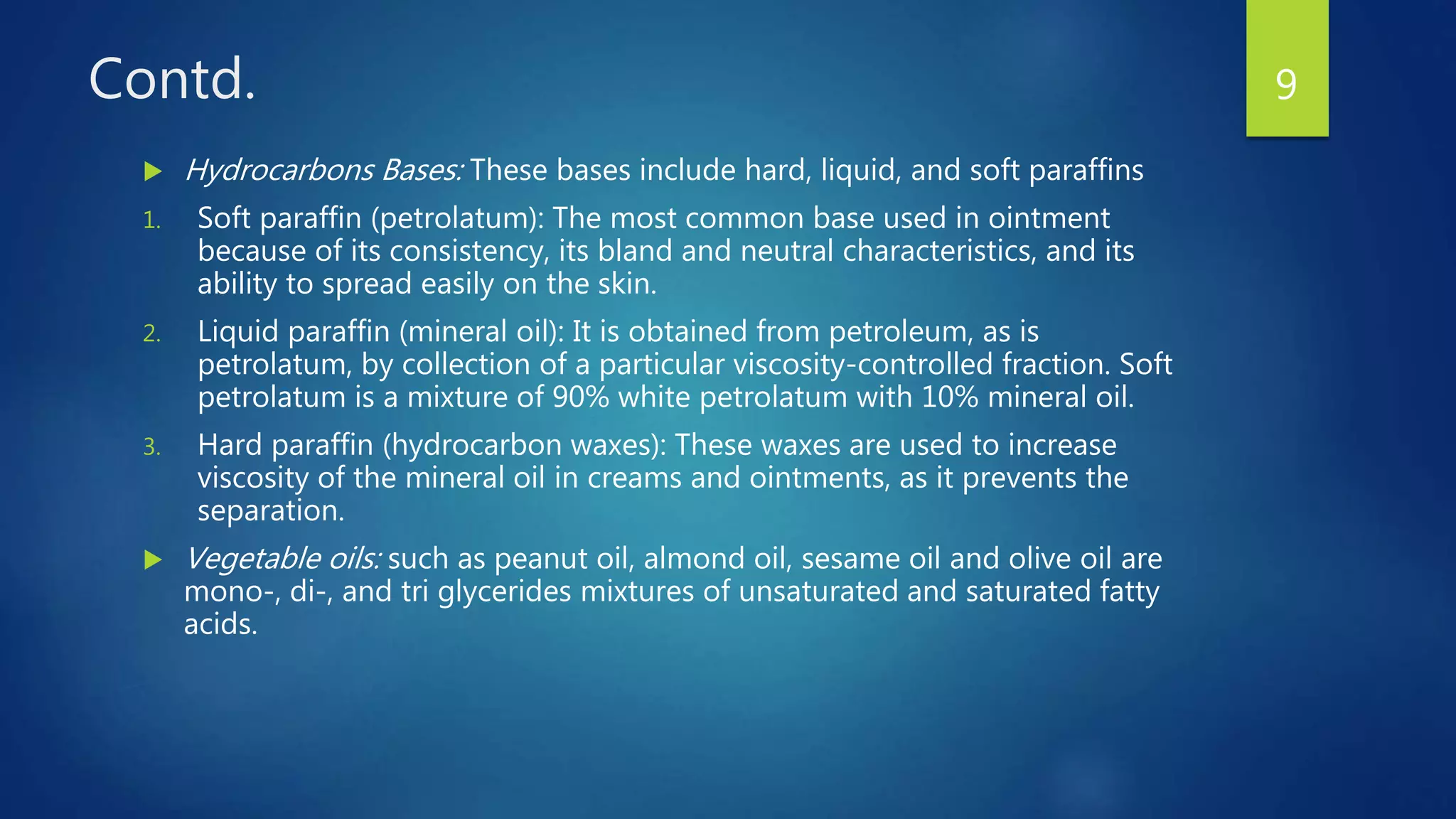This document provides information about ointment as a semisolid dosage form. It defines ointments as semisolid preparations intended for external application with properties that allow them to cling to the application surface. The document discusses the composition of ointments including their bases, which can be oleaginous, absorption, water removable, or water soluble. It also covers the advantages and disadvantages of ointments as well as methods for their preparation, including incorporation and fusion methods. The selection of an appropriate base depends on factors like desired drug release and stability.


























